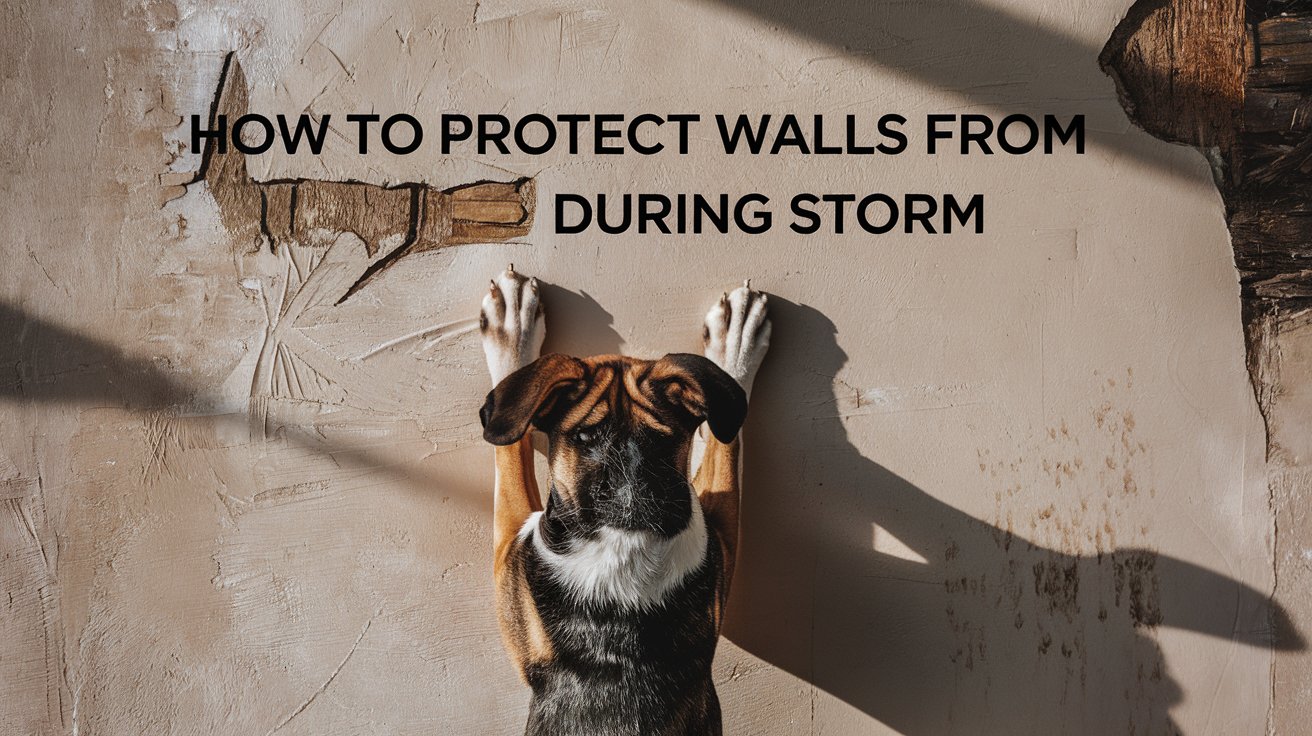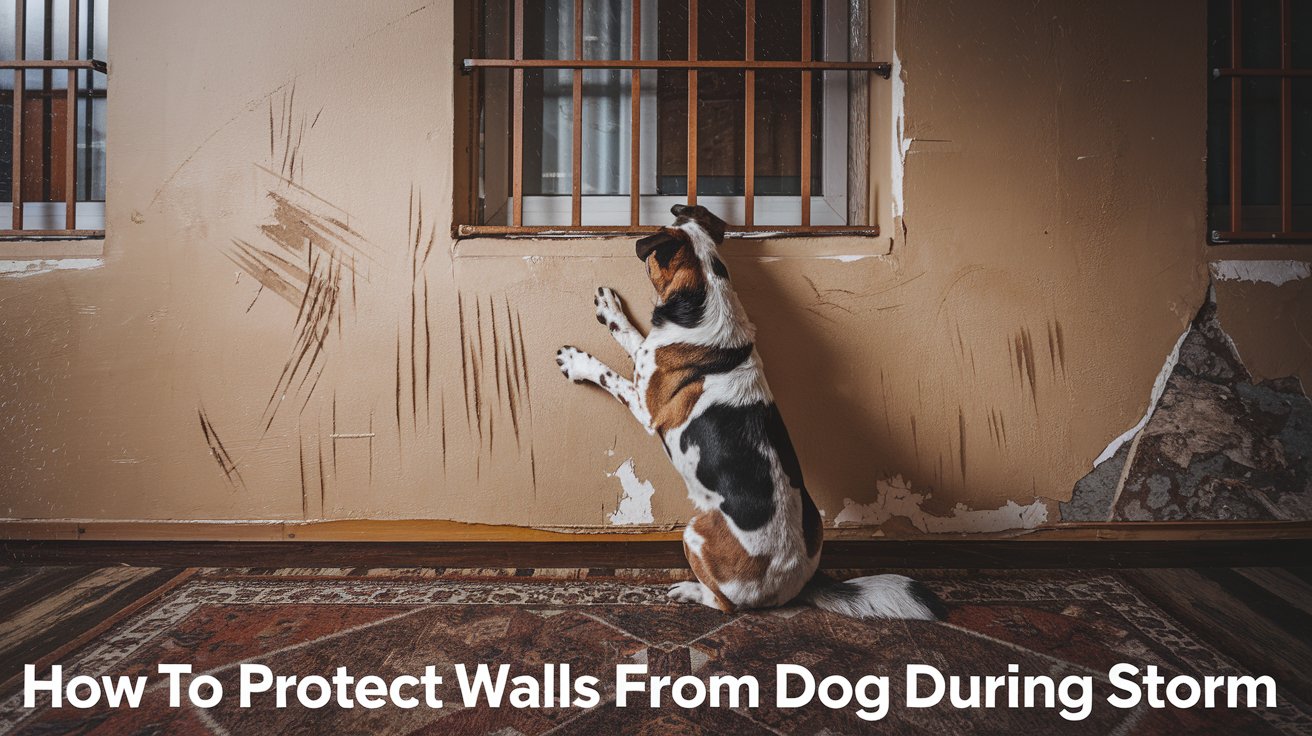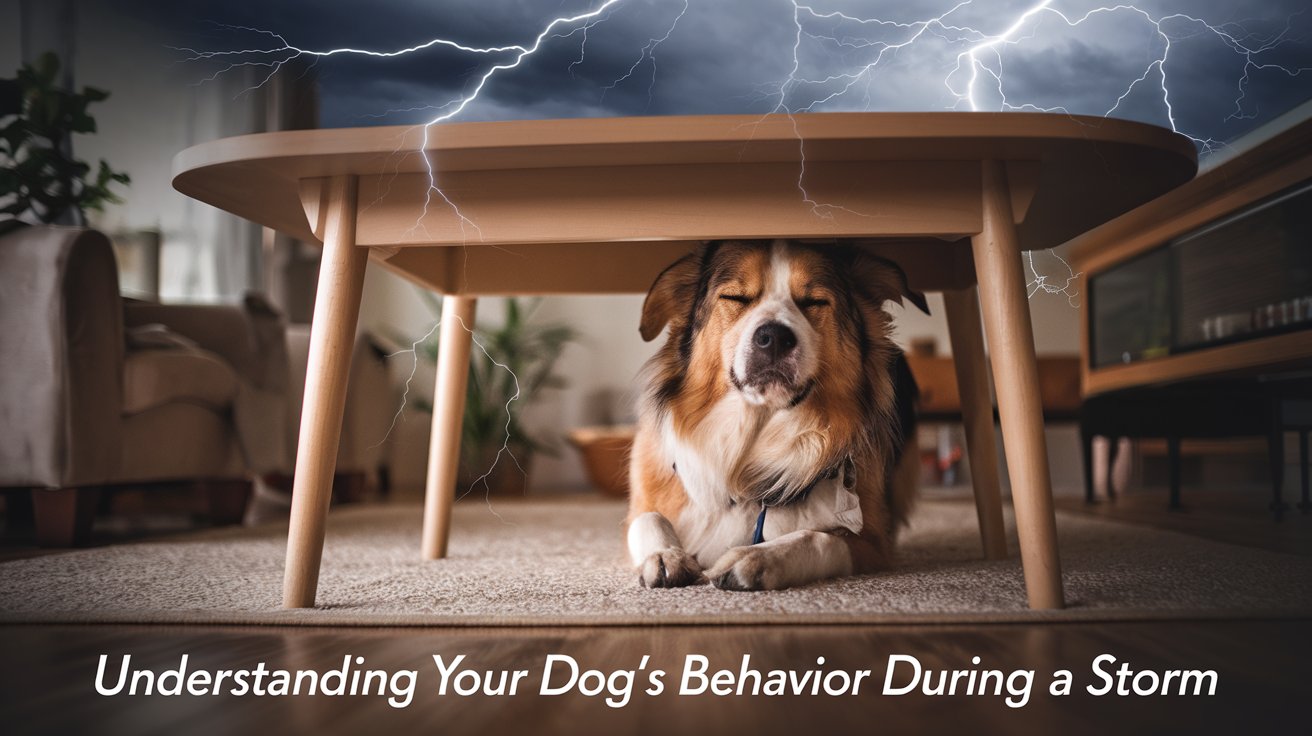
How To Protect Walls From Dogs During Storm?
Storms can be stressful, not only for humans but also for our furry friends. Many dogs display anxious behavior when a storm hits, which often leads to them scratching or chewing on walls as a way of coping. If your dog becomes destructive, protecting your home—especially your walls—becomes crucial during these stormy times.
But why do storms cause such havoc for dogs? And how can you ensure your dog’s comfort while keeping your home intact? In this article, we’ll dive into 15 actionable strategies you can use to protect your walls from your dog during a storm, while also easing their anxiety.
15 Effective Strategies to Protect Your Walls from Your Dog During a Storm
Strategy 1: Create a Safe Space for Your Dog
One of the most effective ways to prevent destructive behavior is by giving your dog a designated safe space. This could be a cozy corner or a room with comforting items like their bed and toys. Dogs naturally look for shelter during storms, and having a designated area will keep them away from the walls.
How to Design a Comfort Zone
To create a comfortable environment for your dog, make sure the area is quiet and away from windows where lightning and thunder are most visible and loud. Use calming elements like soft blankets, their favorite toys, and dim lighting.
Strategy 2: Use Protective Wall Covers
Investing in wall protectors or covers can be an easy and effective way to shield your walls from scratches and chewing. These can be applied temporarily during storm season and easily removed afterward.
Best Materials for Temporary Wall Protection
Some of the best materials for wall covers include heavy-duty vinyl or plastic, which are resistant to scratches. You can also use furniture blankets or tapestries to cover the lower half of your walls, which are most likely to be damaged.
Strategy 3: Use Dog Crates or Playpens
Crating your dog during a storm might seem restrictive, but it provides a sense of security. A crate acts as a den—a small, enclosed space where your dog can feel safe. If your dog isn’t crate-trained, a playpen with soft padding can also work as a safe space.
Strategy 4: Invest in Calming Products for Dogs
Calming products like weighted blankets, anxiety vests, or calming sprays can make a huge difference. These items help reduce anxiety and, in turn, prevent destructive behaviors like wall-scratching.
Strategy 5: Trim Your Dog’s Nails
By keeping your dog’s nails trimmed, you minimize the damage they can do to your walls during periods of stress. Long nails can easily tear into drywall or wooden surfaces, leaving behind unsightly marks.
Strategy 6: Distract Your Dog with Toys
Providing interactive toys like puzzle feeders or chew toys can keep your dog’s focus away from the walls and on something more productive. The distraction helps them channel their energy and anxiety into a positive activity.
Strategy 7: Use Furniture Covers to Block Wall Access
If your dog tends to scratch certain areas of the walls, strategically placing furniture or covers can block off those spots. Use heavy items like bookshelves or couches to create barriers between your dog and the walls.
Strategy 8: Apply Anti-Scratch or Chew Deterrent Sprays
You can apply chew deterrent sprays to walls that your dog is prone to attack. These sprays have bitter or unpleasant tastes and scents that deter dogs from chewing or scratching the treated surfaces.
Strategy 9: Use Exercise to Tire Your Dog Out Before a Storm
An exhausted dog is less likely to engage in destructive behavior. Make sure to exercise your dog with a long walk or a play session before a storm hits, so they’re more likely to rest when the thunder starts.
Strategy 10: White Noise Machines or Music to Soothe Dogs
Background noise can be a great way to mask the sound of thunder. White noise machines, calming music, or even the TV can help distract your dog from the unsettling sounds of the storm.
Strategy 11: Install Protective Barriers Near the Walls
If certain areas of your home are more susceptible to damage, consider installing protective barriers such as baby gates or dog fences. This will keep your dog away from the walls during high-stress periods.
Strategy 12: Utilize Dog Training to Mitigate Destructive Behavior
Proper training can work wonders in helping dogs manage their anxiety. Teach your dog commands like “stay” or “calm” to prevent them from panicking during storms. Positive reinforcement techniques will help them learn how to behave.
Strategy 13: Provide Mental Stimulation for Anxiety Relief
Mental stimulation can help divert your dog’s focus from the storm. Games like hide-and-seek, or training exercises using treats, can keep their mind engaged and reduce destructive tendencies.
Strategy 14: Use Storm-Resistant Dog Beds
Specialized dog beds designed for storms are available in the market. These beds often have calming effects and provide a snug, comforting space for your dog to retreat to during a storm.
Strategy 15: Keep Calm and Reassure Your Dog
Understanding Your Dog’s Behavior During a Storm
Anxiety and Stress in Dogs
Storms often trigger anxiety in dogs, and this can be due to several factors: loud noises like thunder, flashes of lightning, or even changes in atmospheric pressure. All of these can lead to overwhelming stress for your dog, causing them to act out in ways they normally wouldn’t.
The Connection Between Storms and Destructive Behavior
Dogs may chew on or scratch at walls when they’re anxious or scared because it gives them a sense of control in an otherwise frightening situation. Destructive behavior is a common outlet for dogs who don’t know how else to handle their storm-related stress.
Why Dogs Seek Comfort in Destructive Ways
When faced with fear, some dogs look for comfort in familiar surroundings. However, when they can’t find it, they often turn to chewing or scratching—especially on walls, door frames, or furniture. These behaviors are their way of releasing pent-up anxiety.
Conclusion
Storms don’t have to mean destruction in your home. By understanding your dog’s behavior and using these 15 effective strategies, you can protect your walls and ensure your pet feels safe and calm. A combination of physical barriers, mental stimulation, and soothing techniques will go a long way in safeguarding both your dog and your home during stormy weather.

Frequently Asked Questions
Can stress from storms cause long-term behavioral changes in dogs?
Yes, in some cases, prolonged anxiety from storms can lead to long-term behavioral issues such as increased sensitivity to loud noises or more frequent destructive behavior.
How can I keep my dog calm during a storm?
You can keep your dog calm by providing a safe space, using calming products like anxiety vests, and playing white noise or music to mask the storm’s sounds.
Are certain dog breeds more prone to storm-related anxiety?
Yes, breeds like Border Collies, German Shepherds, and Golden Retrievers are more prone to anxiety due to their high energy and sensitivity.
Is it possible to train my dog to be less destructive during storms?
Absolutely! With consistent training and positive reinforcement, you can help reduce your dog’s destructive behaviors during storms.
What should I do if my dog damages my walls during a storm?
If your dog damages your walls, you can cover the damaged areas with protective coverings, apply anti-chew sprays, and consult a trainer for further behavioral adjustments.

I’m Haseem Ali, a passionate writer focused on dog diet, health, training, lifestyle, and care. I’m dedicated to sharing expert advice and practical tips to help fellow dog owners provide the best for their furry friends. When I’m not writing, I enjoy spending time with my own dogs and exploring new pet-friendly activities.

